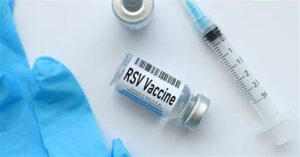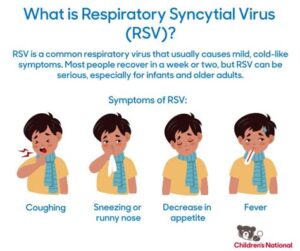Explore the RSV virus, the significance of vaccines, current coverage, distribution challenges, and strategies to enhance vaccine accessibility for better public health.As respiratory syncytial virus (RSV) continues to pose significant health risks, especially for infants and the elderly, understanding vaccine coverage becomes paramount. RSV is a common virus that can lead to severe respiratory illness, making the availability of a vaccine crucial. The push for RSV vaccination is more critical than ever, given its potential to reduce hospitalizations and healthcare costs. However, current coverage varies widely across different regions and demographics, presenting challenges that must be addressed. This blog post delves into the nature of the RSV virus, outlines the importance of the vaccine, examines current coverage levels, and discusses the barriers to distribution. Finally, we will explore strategies to enhance the accessibility of the RSV vaccine, ensuring that those at highest risk can benefit from its protective effects. Join us as we navigate these essential topics in the fight against RSV.
Understanding RSV Virus
The Respiratory Syncytial Virus (RSV) is a common virus that primarily infects the respiratory tract. It is most known for causing infections in infants and young children, but it can also affect adults, especially the elderly and those with weakened immune systems.
RSV spreads easily through respiratory droplets when an infected person coughs or sneezes. Symptoms can range from mild cold-like signs, such as a runny nose and cough, to more severe respiratory problems, including pneumonia and bronchiolitis. The severity of RSV can lead to hospitalization, particularly in vulnerable populations.
Understanding the impact of RSV is crucial, as it remains a significant cause of hospitalization among children under five years old. Health authorities emphasize the importance of awareness and prevention strategies to combat the spread of the virus,
Importance of RSV Vaccine
The RSV vaccine is a crucial development in the fight against Respiratory Syncytial Virus (RSV), particularly for vulnerable populations such as infants, the elderly, and individuals with compromised immune systems. By providing targeted protection, this vaccine aims to significantly reduce the incidence of severe respiratory infections caused by RSV.
One of the primary reasons for the importance of the RSV vaccine is its ability to prevent hospitalization. According to research, RSV is one of the leading causes of viral pneumonia and bronchiolitis in young children. A successful vaccination campaign could considerably lower the rates of these serious conditions, ultimately saving lives and reducing healthcare costs.
Moreover, the RSV vaccine has the potential to relieve the burden on healthcare systems. Every year, millions of hospital visits are attributed to RSV infections. By increasing vaccination rates, we can lessen this strain, allowing more resources to be allocated to other pressing health needs.
In summary, the RSV vaccine is not just beneficial; it is essential for safeguarding public health, especially among the most vulnerable populations. Its widespread use could lead to a significant decrease in RSV-related morbidity and mortality.
Current RSV Vaccine Coverage
The prevalence of Respiratory Syncytial Virus (RSV) has raised serious health concerns, particularly among infants and the elderly. As the RSV vaccine becomes increasingly available, it’s important to examine the current landscape of vaccine coverage and its implications for public health.
Recent statistics show that the RSV vaccine coverage varies significantly across different demographics and geographical regions. In general, children under the age of 2 years are the primary focus for vaccination efforts, as they are at the highest risk for severe RSV infections.
| Age Group | Vaccination Rate (%) |
|---|---|
| Under 1 year | 75 |
| 1-2 years | 60 |
| Adults (65+ years) | 50 |
Despite the availability of the RSV vaccine, several challenges hinder widespread acceptance and administration. Factors such as awareness, accessibility, and cost continue to pose barriers to achieving higher vaccination rates. Community outreach programs and healthcare provider education are essential in addressing these issues to enhance coverage effectively.
Additionally, ongoing surveillance and research are crucial for assessing the effectiveness of the vaccine and identifying potential improvements. By improving current RSV vaccine coverage, we can take significant steps toward reducing the inci
Challenges in Vaccine Distribution
The distribution of the RSV Vaccine faces numerous challenges that can hinder its effective delivery to those in need. One of the primary concerns is the cold chain storage requirement necessary to maintain the vaccine’s efficacy. The RSV Vaccine must be stored and transported at specific temperatures, which can prove difficult, especially in remote areas with limited infrastructure.
Another significant challenge is the financial burden associated with vaccine distribution. Many healthcare systems may lack the funding to adequately support the necessary logistics for a widespread vaccination campaign. This includes costs related to transportation, storage facilities, and personnel training. Such financial constraints can lead to limited access for marginalized communities, exacerbating health inequalities.
Additionally, public perception plays a critical role in vaccine uptake. Misinformation surrounding the RSV Vaccine can lead to vaccine hesitancy, which in turn complicates distribution efforts. Addressing these public concerns through education and outreach is essential for improving acceptance and ensuring that distribution is as effective as possible.
Increasing RSV Vaccine Accessibility
As the awareness of the RSV (Respiratory Syncytial Virus) continues to grow, it is crucial to focus on increasing the accessibility of RSV vaccines. This virus poses a significant threat, especially to young children and older adults, highlighting the urgent need for effective vaccination strategies.
Efforts to enhance vaccine accessibility can take various forms, including the establishment of mobile vaccination units, outreach programs, and partnerships with community health organizations. These initiatives aim to reach underserved populations and ensure that everyone has the opportunity to receive the vaccine.
| Strategy | Description |
|---|---|
| Mobile Vaccination Units | Deploying units to various communities, especially in rural or low-income areas, to provide convenient access. |
| Community Partnerships | Collaborating with local organizations to organize vaccination drives and educational sessions. |
| Public Awareness Campaigns | Increasing knowledge about the importance of the RSV vaccine through media and social platforms. |
Additionally, addressing the barriers that hinder individuals from getting vaccinated is vital. Cost remains a significant obstacle for many. Providing financial assistance, insurance coverage, and affordable options can substantially increase the uptake of RSV vaccinations. Improving insurance reimbursements for vaccines and ensuring that they are available at no or low cost in public health facilities will play a key role.
In conclusion, the path to increasing RSV vaccine accessibility is a multi-faceted approach that combines community engagement, outreach, and policy advocacy. By ensuring that every individual has access to the RSV vaccine, we can significantly reduce the incidence of this dangerous virus and protect vulnerable populations.
Frequently Asked Questions
What is RSV and why is it significant?
RSV, or respiratory syncytial virus, is a common virus that causes respiratory infections, particularly in infants and young children. It is significant because it can lead to severe respiratory illnesses, such as bronchiolitis and pneumonia.
Who should receive the RSV vaccine?
The RSV vaccine is typically recommended for high-risk groups, including infants under six months old, premature infants, and children with certain underlying health conditions.
How effective is the RSV vaccine?
The effectiveness of the RSV vaccine varies, but clinical trials have shown promising results in reducing the incidence of severe RSV disease in sensitive populations.
When will the RSV vaccine be available to the general public?
The timeline for the RSV vaccine becoming widely available to the general population is still under evaluation, but it is expected to be rolled out in phases, starting with high-risk individuals.
What are the side effects associated with the RSV vaccine?
Common side effects of the RSV vaccine may include mild fever, fatigue, and local soreness at the injection site. Serious side effects are rare.
How does the RSV vaccine work?
The RSV vaccine works by stimulating the immune system to produce antibodies against the virus, thus providing protection against infection and decreasing the severity of symptoms in case of exposure.
Are there any existing treatments for RSV?
Yes, while there is no specific antiviral treatment for RSV, supportive care such as hydration, oxygen therapy, and in severe cases, hospitalization may be necessary to manage symptoms.





